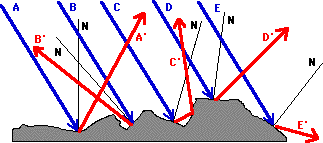Authors: Tan Phat Chau, Minh Thai Nguyen, Nhat Minh Nguyen & Thai Binh Nguyen
Table of Contents
Table of Contents
1.Introduction
In optical fibers communication, it is really important to consider all elements that affect the transmission of signals through optical fiber. There are several elements which relates to the attenuation in optical fiber transmission, including transparency of optical fibers, optical amplifiers, decibels, frequency and other variable dependencies. All of them will be covered respectively in this wiki page.
2.Transparency in optical fibers
Optical fibers have held a key role in making growth of world-wide communications and internet. The creation of very pure glass which is sufficiently transparent that makes possibility of long distance transmission of light through glass fibers. In 1960, working in research laboratory in California, Theodore Maiman produced the first operating laser which has very pure nature, well-defined color and is very bright. The special properties of laser create opportunities to expand the usefulness of optical communication links. In addition, the creation of a reliable, affordable channel for long distances data transmission is required to advance optical communication. In 1854, in London, John Tyndall shown that light can be guided along a stream of flowing water that proves light needs not to travel in straight lines.[1]
An optical waveguide must be made from a transparent material which can be plastics or glasses. Optical attenuation in plastics is much higher than the attenuation in glasses. Materials such as polystyrene or polymethacrylates (PMMA) are often used plastic fibers with losses in range of 100-1000 dB/km. However, plastic fibers are easy to manufacture so that is an economic solution for short-range communication. Nevertheless, glasses are excellent materials for optical waveguides as those have very low loss.[2,128]
Total internal reflection theory was applied in guiding light in optical fibers. When a light ray passes from a transparent medium to another, it bends at the boundary of two media. The bending phenomenon can be described by Snell’s law mathematically:
a first sense q 1 = n 2 sin q 2
Figure1: Refractive indices of media and Snell’s law. Copied from [1].
As figure 1 shows that is n2 is less than n1, there is restriction of the angles that light ray can go cross the border. Light goes from medium 1 to medium 2 with condition that f1 is greater than the critical angle so light cannot refract across the boundary (because f1 cannot greater than 90). The critical angle is defined by sine of n2/n1. A light ray goes to the boundary at an angle which is greater than the critical angle, it reflects and does not cross the border.[1]
Figure 2: Total internal reflection. Copied from [1].
Figure 2 shows typical structure of an optical fiber with the capability of guiding light ray inside by applying the total internal reflection between the core glass and the less dense glass surrounding.
In 1958, fiber imaging bundles were developed for medical imaging. In that bundle, a large number of optical fibers are bonded together. Optical image is relayed from one end of bundle and appears at the other end, where it can be seen. It was concluded that about 80 percents of the original light is transmitted to other end with a bundle 1m long. However with 100m long bundle, only a ten billionth part of the light reaches the far end. The attenuation of bundle was measured as 1000 dB per km, which can be considered useless for long distance light transmission.[1]
In 1966, Charles Kao and George Hockham pointed out that glass attenuation has reason in the impurity with appearance of metal ions, such as iron, copper, vanadium and chromium and a glass with attenuation of 20 dB/km can make 1% of input light reaches the other end of a 1 km-length fiber. In 1979 the attenuation of 0.2 dB/km was achieved in optical fiber.[1]
References
3.Optical amplifiers
...
5.Frequency
Attenuation always serves as a measurement parameter that leads to the formation of theories to explain physical or chemical phenomenon, which decreases the ultrasonic intensity. Attenuation is generally proportional to the square of sound frequency. Quoted values of attenuation are often given for a single frequency, or an attenuation value averaged over many frequencies may be given. The attenuation coefficient (α) can be used to determine total attenuation in dB in the medium using the following formula:
α: attenuation coefficient
The attenuation coefficients of common biological materials at a frequency of 1 MHz are listed below:
| Material | a (dB / (MHz ; cm)) |
|---|---|
| Air | 1.64 (20°C) |
| Blood | 0.2 |
| Bone, cortical | 6.9 |
| Bone, trabecular | 9.94 |
| Brain | 0.6 |
| Breast | 0.75 |
| Cardiac | 0.52 |
| Connective tissue | 1.57 |
| Dentin | 80 |
| Enamel | 120 |
| Fat | 0.48 |
| Liver | 0.5 |
| Marrow | 0.5 |
| Muscle | 1.09 |
| Tendon | 4.7 |
| Soft tissue (average) | 0.54 |
| Water | 0.0022 |
Figure 1. Diffuse reflection. Copied from [1]
References
- Culjat, Martin O.; Goldenberg, David; Tewari, Priyamvada; Singh, Rahul S. (2010). "A Review of Tissue Substitutes for Ultrasound Imaging". Ultrasound in Medicine & Biology 36 (6): 861–873.
- Tole, Nimrod M. (2005). Basic physics of ultrasonographic imaging.
Chapter 3: http://www.isradiology.org/isr/docs_books/basic/Chapter3.pdf - Michael L. Oelzea; William D. O’Brien, Jr. (2002). Frequency-dependent attenuation-compensation functions for ultrasonic signals backscattered from random media.
References
- Reflection and the Ray Model of Light - Lesson 1 - Reflection and its Importance
http://www.physicsclassroom.com/class/refln/Lesson-1/Specular-vs-Diffuse-Reflection - B.G. Potter. Module 3 - Attenuation in optical fibers
http://opti500.cian-erc.org/opti500/pdf/sm/Module3%20Optical%20Attenuation.pdf

